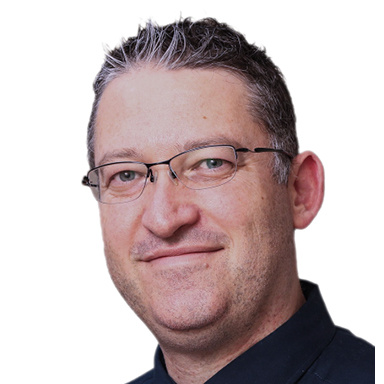Internationally recognised orthopaedic surgeons Dr Gadi Epstein and Professor Nando Ferreira perform specialised limb surgery at Mediclinic Durbanville.
Their approach combines surgical precision with deep expertise in musculoskeletal science to help restore mobility, relieve pain, and improve patients’ quality of life.
Changing lives
A 12-year-old girl who had an ankle injury after a pedestrian-vehicle accident battled with a seriously deformed lower leg. After receiving compensation from the Road Accident Fund, she was sent from her home in the Eastern Cape to Mediclinic Durbanville for treatment.
“She had a very severe deformity, and her one leg was shorter than the other,” Dr Epstein recalls. “We managed to get her leg straight and her leg lengths corrected, so she was able to walk properly again. It was a complex case, and she’s done remarkably well.”
The bare bones of limb reconstruction
A subspecialty of orthopaedics, limb reconstruction has gathered momentum recently, says Dr Epstein. “This is specifically around the quest to develop techniques in managing very challenging and complex scenarios – like surgical complications or complex pathologies in orthopaedic surgery,” he explains. Such pathologies range from congenital abnormalities to infections or complications relating to surgeries or tumours.
The goal, he continues, is to try to get these patients some relief with these extremely complex cases. “This has led to a niche field in orthopaedics, treating patients who have either limb-threatening or disabling pathologies, some with severe pain or constant infection. These are conditions that require focused, subspecialty delivery of treatment for them to get on the path to recovery.”
What sets limb reconstruction doctors apart is that many of their referrals come from other orthopaedic surgeons, whereas an arthroplasty surgeon or spine surgeon will mainly get referrals from general practitioners, Professor Ferreira explains. “Our patients have often had orthopaedic surgery before, with less-than-ideal outcomes.”
While no surgery is ever perfect, he and Dr Epstein specialise in managing complications of orthopaedic procedures or complex cases often associated with deformities. “These are cases that the average orthopaedic surgeon might not have the appetite to see to because of the complexity and the longevity of the treatment required,” Professor Ferreira says.
Those who treat a high volume of these cases generally have better outcomes due to their experience. That’s why he and Dr Epstein often see patients who travel across the country to Mediclinic Durbanville for the treatment they offer at their state-of-the-art Limb Reconstruction and Musculoskeletal Infection Unit at Mediclinic Durbanville. This is a unique offering in the hospital’s catchment area, one that has also been recognised across the country and beyond.
Cutting-edge tools and techniques
South Africa has access to all internationally used tools for limb reconstruction, says Professor Ferreira. This includes intramedullary lengthening devices, which are internal surgical implants that are used to lengthen long bones. More niche implants are also available at Mediclinic Durbanville due to the work their orthopaedic team has done with the manufacturers over the years.
Internal surgical implants are an example of a bone transport device. “We now also have intramedullary bone (IM) transport devices,” Professor Ferreira says. IM bone transport devices are motorised nails inserted into the bone marrow cavity to stimulate new bone formation. “Some of the newer techniques that are being specifically developed in the United States, like transverse bone transport, are available to us. Specifically in diabetic foot management, this is one of the new buzzwords in international limb reconstruction.”
South African engineering companies have also developed some innovative solutions specifically for bone defects, he adds. “These include patient-specific, custom-made, 3D-printed titanium implants that we can use for patients. So, we have extensive technology in terms of biologics, in terms of implants, and in terms of the techniques available.”
Making complex decisions
Ultimately, deciding how to proceed when it comes to limb reconstruction is a complex decision-making process, the doctors explain. This is especially true when it comes to considering whether to salvage a limb or amputate it. “As the techniques that we use advance and become more refined, we tend to salvage more and more limbs,” Professor Ferreira explains.
An example of such advancements is osteointegration, where surgeons can attach the prosthesis to the bone or into the bone, Dr Epstein says. This technique is, however, not yet widely used in South Africa due to cost implications and lack of availability.
“You want to give the patient a functional limb in the most pain-free way possible, and as quickly and easily as possible, where the end result must be better than if they were to have a prosthesis,” explains Professor Ferreira. The patient’s social circumstances, mental state, and needs and wants are also always considered.
The doctors say that having one another to debate ideas with and to collaborate with on patient management is vital in the required decision-making process, as the way forward is not always clear-cut. “There is always more than one choice per patient, and it takes discussion to figure out what is the best,” Professor Ferreira explains.
Further publications on the topic
Doctors 2



